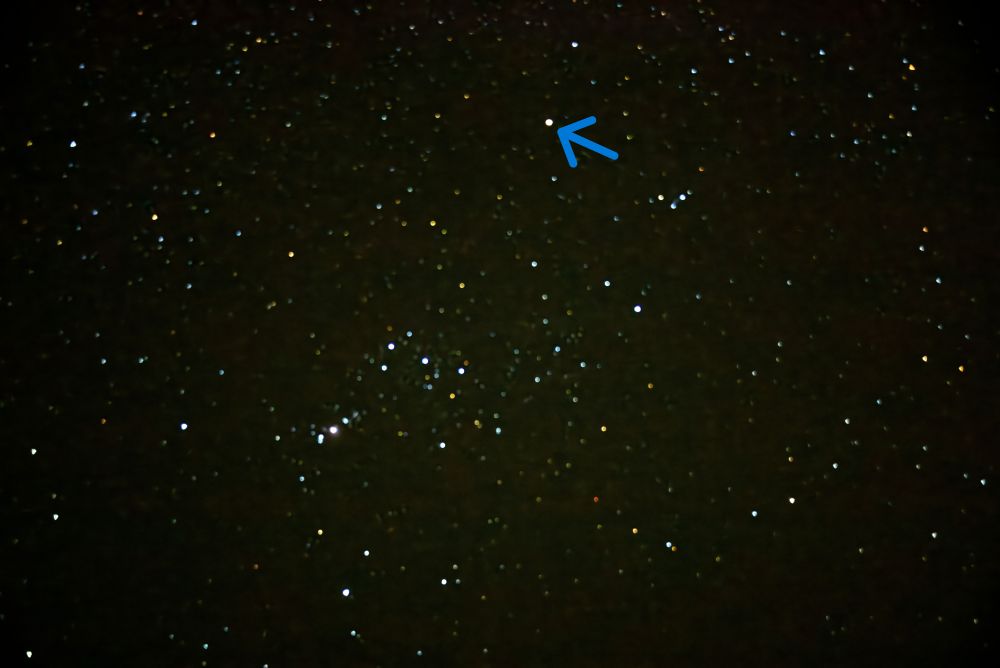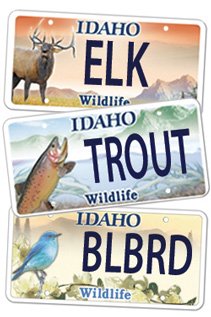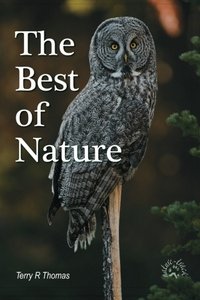Light Speed

©Terry R. Thomas/www.nature-track.com
The star, Betelgeuse, could possibly be already dead and gone and we just don’t know it because the light we see left the star over 600 years ago.
As I watched shooting stars from our campsite in the Virgin River Canyon south of St. George Utah, I could not get my mind around an endless universe. How can something go on forever? I am used to a world of boundaries and ends—infinity just does not compute. Nature, though, has so many events and activities that are unfathomable to the human mind (at least this one). For instance, how about trying to envision 4.5 billion years, the scientifically accepted age of the Earth?
Light, or more specifically, the speed of light, is one of those unfathomable things. Light travels so fast that when scientists began contemplating it, they had to invent a new method of measuring speed. Light speed is 186,000 miles/second (5.88 trillion miles in one year—one heck of a road trip). Even then, the distances in the known universe are so vast that trying to contemplate a star a million or so light years distant is beyond mindboggling.
Light travels faster than any other known entity, yet, all light apparently travels at the same speed, whether it is from the sun, a distant star, or a new LED flashlight. Even reflected light travels at the same speed as direct light. However, the medium through which light travels, a vacuum (space), air, water, or glass, for instance, does affect the speed of light travel. Light travels fastest in a vacuum.
I’m not sure how to describe how far you would travel in a single day at light speed. In one second, you would travel around the world 7.5 times. If you are prone to motion sickness, you would run repeatedly through clouds of your own vomit. There are 86,400 seconds in one day, so in a day’s travel, you would speed around the Earth 656,640 times. That is a number too large for me to contemplate. I cannot even fathom the relative snail’s pace of the military fighter jet the F-22 Raptor, which, with afterburners engaged, can hit a top speed of 1,500 miles per hour, making the trip from Los Angeles to New York, 2,446 miles, in about an hour and a half (if it could carry enough fuel). A high-speed bullet may hit 3,300 feet per second, faster than an F-22, yet both are way slower than the speed of light.
The Sun is 93 million miles from Earth. Light from the sun makes the journey in about eight minutes. This distance is called an Astronomical Unit, AU for short. The AU is an easier measure for astronomers to use when comparing distances within our solar system. It is much easier to say, and visualize, the distance from the Sun to Mars as 1.5 AU rather than 0.000026472 light years. Outside our solar system though, it does not help.
The distances we are talking about outside the solar system are ginormous and even at the speed of light, travel time is often measured in centuries. The light from the prominent star, Betelgeuse in the Orion constellation, takes 642.5 years to reach the Earth. So, light we see now from Betelgeuse left the star in the year, 1385, over 100 years before Columbus sailed to the Americas.
That leads to a common misunderstanding. Many of us have been taught that shooting stars are stars that burned out long ago (perhaps millions of years ago), but we are just now seeing their final moments as it has taken the light that long to reach us. Not so. Shooting stars are small meteors that are burning out as they hit our atmosphere and they do so in real time.
That does not necessarily mean that there are not stars in our galaxy and beyond that could have burned out and we just do not know it yet. With 100-400 billion stars in our galaxy and one septillion stars in the universe (that is a one followed by 24 zeros, but putting a number—even a big one—on it seems to defy the definition of endless to my feeble mind) that is a lot of potential. However, the death of a star is usually a long process with many recognizable steps. The process could have started on many of them though and we just have not realized it yet.
As of 2023, the closest potentially inhabitable planet is only 17 light years away. Said so flippantly, that seems to be just an evening’s stroll, and indeed, for the astronauts making the journey, Einsteins’ theory of special relativity says that for them it would be, in a sense, instantaneous, as they would not age. Yet, for the fastest spacecraft currently available, the New Horizons probe, which travels at 36,373 miles per hour, it would take just under 20,000 years to travel one light year, or 340,000 years to reach that planet.
Hopes of getting to another habitable planet seem slim indeed, so we would be well advised to take care of the one we are on.
Help Idaho Wildlife
When we traveled across the state in October 2017, we visited most of the Idaho Department of Fish and Game wildlife management areas. Most of the vehicles we saw using the wildlife management areas did not have wildlife plates. Buying wildlife plates is a great way for non-hunters and hunters alike to support wildlife-based recreation like birding.
C'mon folks, let's help Idaho's wildlife by proudly buying and displaying a wildlife license plate on each of our vehicles!
See below for information on Idaho plates. Most states have wildlife plates so if you live outside Idaho, check with your state's wildlife department or vehicle licensing division for availability of state wildlife plates where you live.
And tell them that you heard about it from Nature-track.com!

Wildlife License Plates
Great news! as of 2024, there are three NEW designs for license plates. They still are bluebird, cutthroat trout and elk, but they are beautiful.
Idaho Wildlife license plates provide essential funding that benefits the great diversity of native plants and wildlife that are not hunted, fished or trapped—over 10,000 species or 98% of Idaho’s species diversity. Game species that share the same habitats (such as elk, deer, antelope, sage-grouse, salmon, trout) also benefit from these specialty plates.
No state tax dollars are provided for wildlife diversity, conservation education and recreation programs. Neither are any revenues from the sale of hunting or fishing licenses spent on nongame species. Instead, these species depend on direct donations, federal grants, fundraising initiatives—and the Idaho Wildlife license plates.
Both my vehicles have Bluebird Plates. I prefer the bluebird because the nongame program gets 70 percent of the money from bluebird plates, but only 60 percent of the money from elk and trout plates - 10 percent of the money from elk plates supports wildlife disease monitoring and testing programs (to benefit the livestock industry) and 10 percent from cutthroat plates supports non-motorized boat access.
Incidentally, in 2014, the Idaho Legislature denied the Department of Fish and Game the ability to add new plates or even to change the name of the elk and cutthroat plates (very specific) to wildlife and fish plates, a move that would have allowed for changing images occasionally and generating more revenue. It would seem that they believe that we Idahoans don't want a well funded wildlife program.
I think it is time we let the Legislature know that Idahoan support wildlife funding and that we would like to see these generic plates come to fruition.

"WOW. What a phenomenal piece you wrote. You are amazing." Jennifer Jackson
That is embarrassing, but actually a fairly typical response to my nature essays. Since The Best of Nature is created from the very best of 16 years of these nature essays published weekly in the Idaho Falls Post Register (online readership 70,000), it is a fine read. It covers a wide variety of topics including humorous glimpses of nature, philosophy, natural history, and conservation. Readers praise the style, breadth of subject matter and my ability to communicate complex and emotional topics in a relaxed and understandable manner.
Everyone can find something to love in this book. From teenagers to octogenarians, from the coffee shop to the school room, these nature essays are widely read and enjoyed.
Some of the essays here are my personal favorites, others seemed to strike a chord with readers. Most have an important message or lesson that will resonate with you. They are written with a goal to simultaneously entertain and educate about the wonderful workings of nature. Some will make you laugh out loud and others will bring a tear to the eye and warm your heart.
Readers Write:
"You hit a home run with your article on, Big Questions in Nature. It should be required reading for everyone who has lost touch with nature...great job!" Joe Chapman
"We enjoyed your column, Bloom Where Planted. Some of the best writing yet. The Post Register is fortunate to have your weekly columns." Lou Griffin.
To read more and to order a copy, click here or get the Kindle version
Copies are also available at:
Post Register
Island Park Builders Supply (upstairs)
Barnes and Noble in Idaho Falls
Harriman State Park, Island Park
Museum of Idaho
Valley Books, Jackson Wyoming
Avocet Corner Bookstore, Bear River National Wildlife Refuge, Brigham City, Utah
Craters of the Moon National Monument Bookstore, Arco, Idaho